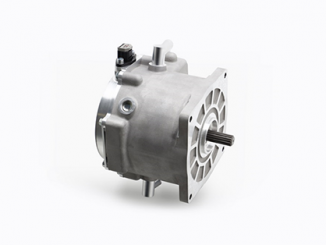
Hitachi Metals reported a 16% drop in its revenues from magnetic materials and applications for the first half of its current fiscal year, citing weakening demand in all its major markets including industrial equipment, electronics and automotive.
The report covers the six months ended September 30. Revenues were approximately $560 million for the period, dropping about $89 million from the same period a year earlier. It cites a slowdown in its sales of rare earth magnets particularly.
This was because sales of industrial equipment-related rare earth magnets decreased year on year due to a slowdown in the electronics-related and semiconductor-related markets and a significant decline in demand for various manufacturing equipment and industrial machinery, and sales of automotive electronic components also decreased year on year, according to Koji Sato, president and CEO. Sales of ferrite magnets decreased year on year due to a decrease in automotive electronic components. As a result, overall sales of magnetic materials and applications decreased year on year.

Among power electronics materials, sales of soft magnetic materials and their applied products decreased year on year due to a decline in demand for amorphous metals for transformers and some components for consumer equipment, despite an increase in demand for the use of automotive electronic components.
Sales of its ceramic components increased year on year due to an increase in demand mainly for the use of automotive electronic components, the company said. As a result, sales of power electronics materials remained at the same level as the same period last year.
The global economy as a whole saw moderate growth during the six months but concerns over a slowdown in the future further deepened, mainly due to increasing trade disputes, the slowdown of the Chinese economy, and policy uncertainties in many countries. In the United States, steady economic recovery continued, underpinned by a continued improvement in the employment situation and an increase in individual consumption. Meanwhile, Chinese economic growth continued to slow down as a result of the trade conflict with the United States and a slowdown in domestic demand, which resulted in a slowdown in exports and a decline in production in Europe and weakened the performance of Asian emerging economies. Amid such circumstances, the Japanese economy was faced with a fall in business confidence, mainly in the manufacturing industry, largely due to a slowdown in industrial production and exports.
Among the industries in which the Group operates, the automobile industry in Japan saw an increase in sales of new vehicles, mainly light vehicles and medium-sized and large ordinary passenger vehicles. Meanwhile, China experienced a significant drop mainly in sales of passenger vehicles, and both the United States and Europe also saw a decrease in sales, leading to a drop in global automobile sales. Both domestic and overseas demand for industrial machinery were weak. Housing starts remained flat in the United States but declined in Japan. In the electronics field, smartphone shipments decreased.
For more info, visit: www.hitachimetals.com



